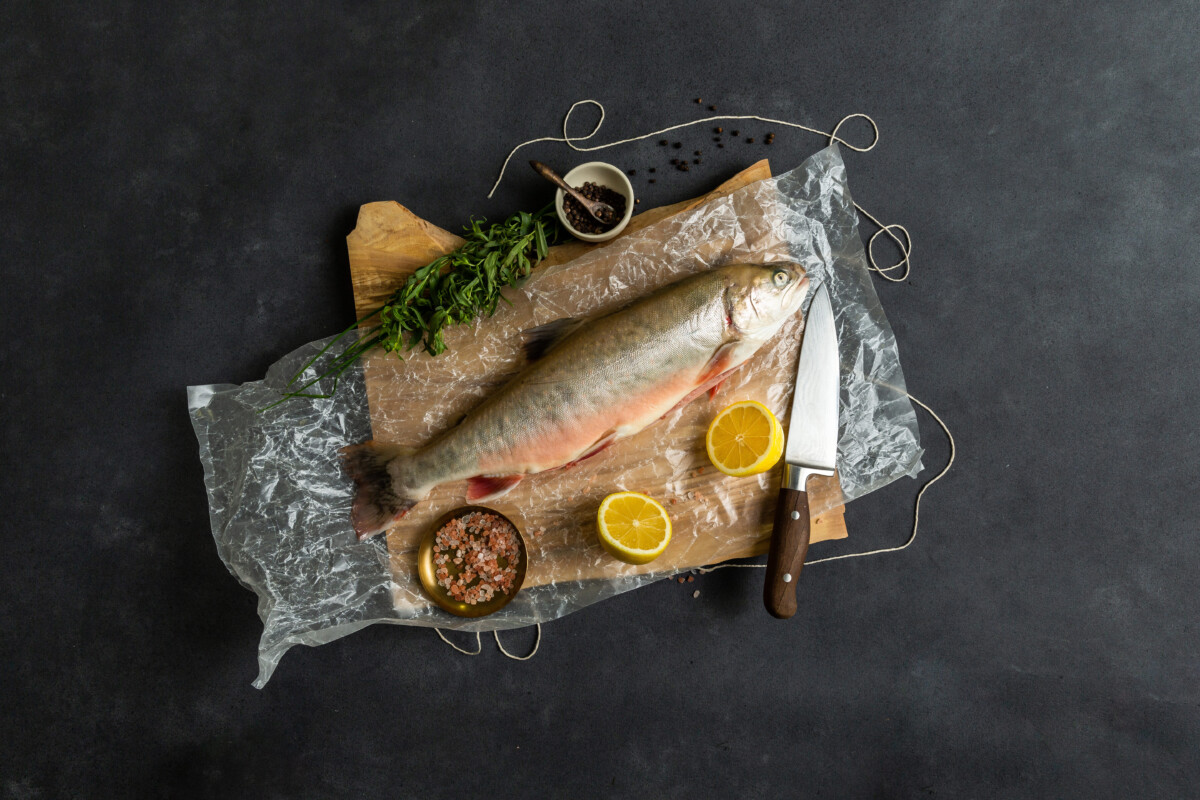Whole Roasted Fish: Save Money & Eat Well
Benefits:
Learning to cook whole fish can save you time and money. Whole fish requires minimal prep time, has flexible cooking methods, and costs around half the price of filleted portions.
Compare and Save
Whole Rainbow Trout $10/lb vs. Rainbow Trout Fillets $15/lb
Whole Arctic Char $9/lb vs. Arctic Char Fillets $16.50/lb
It can be intimidating to cook a whole fish for the first time, but it is much easier than people think! Follow these simple tips and discover the convenience of incorporating whole fish into your weekly meals.
Choosing Your Fish:
A smaller fish like our rainbow trout will serve ~2 people or a medium sized fish like our Arctic char will serve ~4 people.
A good rule of thumb to remember is ~1lb of whole fish per person served.
You can purchase either fresh or frozen whole fish. If you prefer frozen, you can thaw it in the fridge overnight before you plan to cook it. If you choose to buy fresh, make sure to check it over for freshness and quality. The eyes should be clear and shiny, not clouded. Fresh fish should have a firm, shiny flesh that bounces back when pressed. It should smell somewhat briny or like fresh cucumbers, but never rancid.
How to Prepare:
Our Arctic char and rainbow trout come gutted, so they can be cooked as is! Removing the head/tail/fins is up to you – if you prefer an easier prep, you can roast the fish whole.
To add flavour and help with the cooking process, cut slits across the fish, just enough to expose the flesh, and add seasonings of choice: salt, pepper, fresh herbs, lemon slices, garlic cloves. Get creative!
Bake at 450°F for 15-20 minutes (depending on the size of the fish) or until reaching an internal temperature of 145°F. You can also tell that fish is done cooking when the flesh is opaque and it flakes easily with a fork.
To Serve:
Many choose to serve whole baked fish as-is and each person can flake off what they’d like. It is much easier to remove a portion after the fish is cooked! Make sure to watch out for bones in the fish – take your time and pick out and dispose of any bones you find.
Add your choice of side and enjoy! Pairs well with salad, rice, or roasted veggies.
Best Quality & Nutrition:
It is best practice to cook fish (and other proteins) on a higher heat for a shorter time. This ensures the fish will stay juicy, and maintain optimal nutrition. Cooking at a lower heat for a longer amount of time will cause the fish to lose more water, leaving you with a dry dish. As water is lost, you will also lose water-soluble nutrients like B vitamins, and the long heat exposure will affect heat-sensitive nutrients like folate.
Share Your Experience:
Let us know if you try cooking whole fish at home! Share your photos and experiences with us on our Instagram, Facebook, or send them over by email to [email protected].


